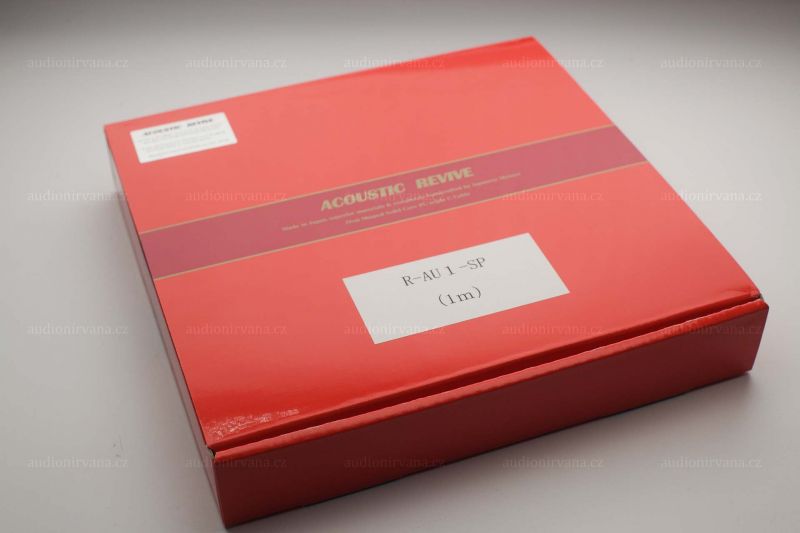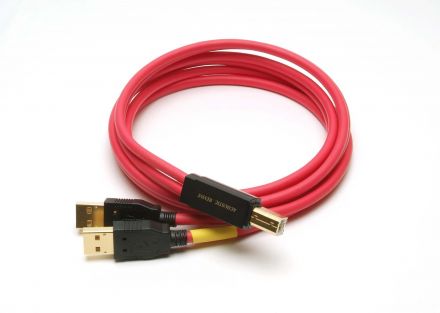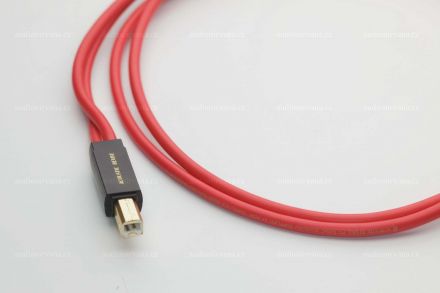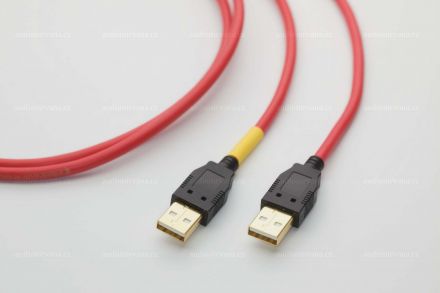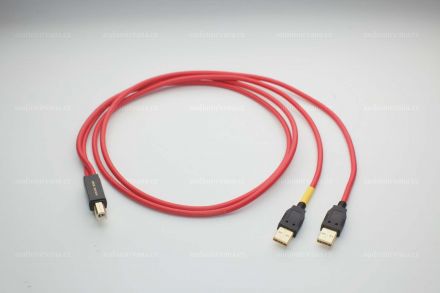You are here Home E-shop E-SHOP Digital cables USB A-B cables Acoustic Revive R-AU 1-SP
Acoustic Revive R-AU 1-SP 1.0m
Select a variant
In stock
Description - Acoustic Revive R-AU 1-SP 1.0m
Highest quality cable Acoustic Revive R-AU1-SP 2 × A type
An epoch-making structure in which the signal line and the power supply line are completely separated.
A USB cable has a mixture of signal lines that transmit digital signals and power lines that supply bus power within a single cable. The mixture of signal lines and power supply lines is affected by the magnetic fields and electric fields generated by each other, and the quality deteriorates significantly. The biggest drawback of USB cables that pursue only convenience lies in this cable structure, and no matter how high-performance conductors, insulation materials, and shields are applied, mutual interference between the signal line and power supply line is unavoidable, and excellent transmission characteristics are achieved. And sound quality cannot be expected.
The R-AU1-SP and R-AU1-PL have adopted an epoch-making structure based on the utility model of ACOUSTIC REVIVE, which completely separates the signal line and power supply line. The structure that uses a dedicated 2-core shielded cable for each of the signal line and power line realizes high-quality sound without mutual interference and transmission deterioration.

PC-Triple C is used for the conductor
Adopted the dream new conductor PC-Triple C by the forging method developed as the world's first dedicated audio conductor.
Fluororesin with excellent relative permittivity is used for the insulating material
Insulating materials affect the transmission characteristics of cables more than conductors. Relative permittivity is a numerical value that indicates the performance of an insulating material. This relative permittivity expresses the force to stop the flow of electricity, and the lower the value, the higher the performance of the insulating material.
However, most of the insulation materials for USB cables currently on the market are PVC (PVC), and the relative permittivity of PVC is 5.6, so even if it is an expensive USB cable for audio, the insulation material is PE (polyethylene). Yes, the relative permittivity is at best 2.3-2.4. On the other hand, the relative permittivity of fluororesin is 2.1, which is the lowest relative permittivity of insulating resin materials at present. Fluorine-insulated R-AU1-SP achieves overwhelming transmission speed.
Uses natural silk as a cushioning material to prevent the generation of static electricity
Natural silk is used as the cushioning material for R-AU1-SP and R-AU1-PL to avoid the effects of vibration due to the vibration isolation effect, prevent the generation of static electricity itself, and further refine the excellent transmission characteristics. I will. Natural silk itself is hard to be charged and prevents the generation of static electricity, but the effect is not only that, but also because it is charged at a positive (+) potential even if it is charged, it is a resin material that charges in the negative (-) direction. When combined with an insulating material, it has the effect of canceling static electricity.
Uses a copper shield with excellent shielding characteristics in the audio band
The R-AU1-SP / R-AU1-PL shield uses a copper shield with excellent shielding characteristics in the audio band, which is most important for music production and music playback. Shields made of aluminum and other light metals are excellent in shielding characteristics in the high frequency band, but inferior in shielding characteristics in the essential audio band, and the generation of unique timbral habits is unavoidable. In that respect, the copper shield does not generate timbral habits, and strictly shields the important audio band to prevent the intrusion of external noise.




